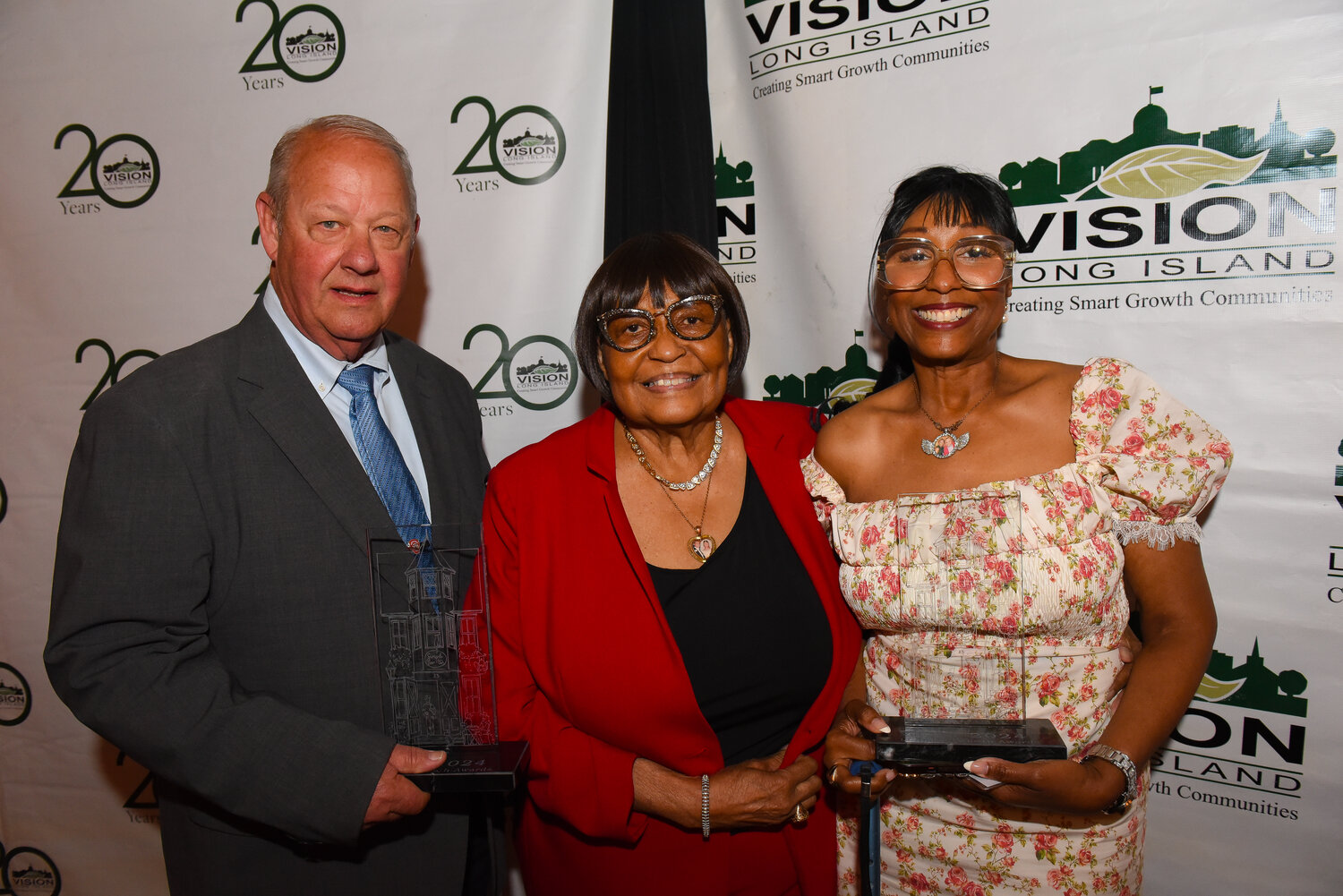New village facility honored at Smart Growth Awards
Bishop Ronald H. Carter Manor, a planned senior-living facility in Freeport named for the longtime leader of the Refuge Apostolic Church of Christ, was among the honorees at the 23rd annual Long Island Smart Growth Awards, hosted by Vision Long Island, at the Crest Hollow Country Club in Woodbury last Friday.
Vision Long Island is a nonprofit focused on promoting “best practices of community design together with experts, stakeholders, and decision makers to advance quality growth and preservation on Long Island,” its Facebook states.
The event attracted 650 business, civic and government leaders to a celebration of forward-thinking community projects that emphasize local planning, downtown revitalization, affordable housing, infrastructure development and walkability. Bishop Ronald H. Carter Manor was recognized for its innovative plan for affordable housing.
The idea for the facility, the late bishop’s daughter, Tanya Carter, told the gathering, “emerged maybe 50 years ago. My father, Bishop Ronald Carter, had a dream that God showed him that he was going to pastor a church, but it wasn’t just in the four walls of the church. He always worked in the community, and so he wanted to find a place for seniors … to live.
“We’re living longer,” Carter added, “and they needed a place to stay and to find help and hope.”
The manor will feature amenities such as a community room, offices for supportive services, a laundry facility, free broadband, charging stations and more, according to Long Island developer Peter Florey, who answered the request for proposal for the project.
“(Carter) realized he had an opportunity, with land adjacent to his church, to build affordable senior housing, and that’s what we’re in the process of doing,” Florey said.
“When we break ground, I know my father will be there in the spirit, blessing us with this day,” his daughter said.
Freeport Mayor Robert Kennedy also spoke at the event — coincidentally, at the venue where he was married 45 years ago.
“I want to thank Eric Alexander and all the executives of his board here today,” Kennedy said, referring to Vision Long Island’s director. “I’m honored to be here today to celebrate Bishop Carter’s Manor, which is an 86-unit senior housing development in the Village of Freeport. Affirmative housing is the key to economic development. We have built, in the Village of Freeport, close to 1,000 residences in the past 10 years.”
“I want to say thanks to Vision Long Island for the economic development they’re bringing in,” Kennedy added. “(It has) a rippling effect on the development of properties and businesses in Freeport.”
“I celebrate the legacy of this tremendous outset, this project,” Carter’s widow, the Rev. Phyllis E. Carter, said. “I thank God for so many who are a part of this. We thank our developer, Peter Florey, for making this happen. Freeport is on the move. And Eric Alexander, we thank God for you as well. And although my husband’s not here, I’m here! And it’s going to happen with your help and your support.”
Launched at last year’s awards, Vision Long Island’s Planned Locally campaign highlights the efforts of civic organizations, chambers of commerce, and local municipality officials in planning and completing vital community projects.
The campaign also opposes agendas that Vision Long Island views as overreaching from Albany and New York City, and advocates for fair funding to support local infrastructure.
Nearly 50 of Long Island’s approximately 100 downtown business districts had have active revitalization plans. Over the past 18 years, more than 17,500 units of transit-oriented development housing have been approved, alongside numerous other downtown projects, according to Vision Long Island.
Currently, more than 45 downtown districts had have at least one multifamily housing project in progress, with more than 10,000 units in the planning stages.
Last year, Vision Long Island noted that during 132 of 150 public hearings on transit-oriented development, affordable housing and downtown projects over the previous decade, supporters outnumbered opponents, leading to a high approval rate. In the past year, however, there has been more opposition to and skepticism about large housing projects, and just eight of 15 public hearings had more supporters than opponents.
Infrastructure remains a key focus. More than 20 Long Island communities are actively seeking funding or planning new wastewater treatment systems to protect water quality and support growth.
Additionally, 30 communities are working on traffic-calming and speed-reduction measures, while 20 have conducted walking audits. In the past decade, more than 40 traffic-calming projects were completed, and officials say that many more are needed.
Downtown areas are also creating and promoting events to boost local tourism and economy. In a three-month period last year, over 400 events were held in 80 communities, attracting large crowds.
These events, ranging from arts and music to cultural and food festivals, are key to keeping local dollars in the community, supporting local services through a Shop Local initiative.
Event attendees this year were encouraged to support the Planned Locally campaign by joining civic organizations to continue reinvesting in their communities.






